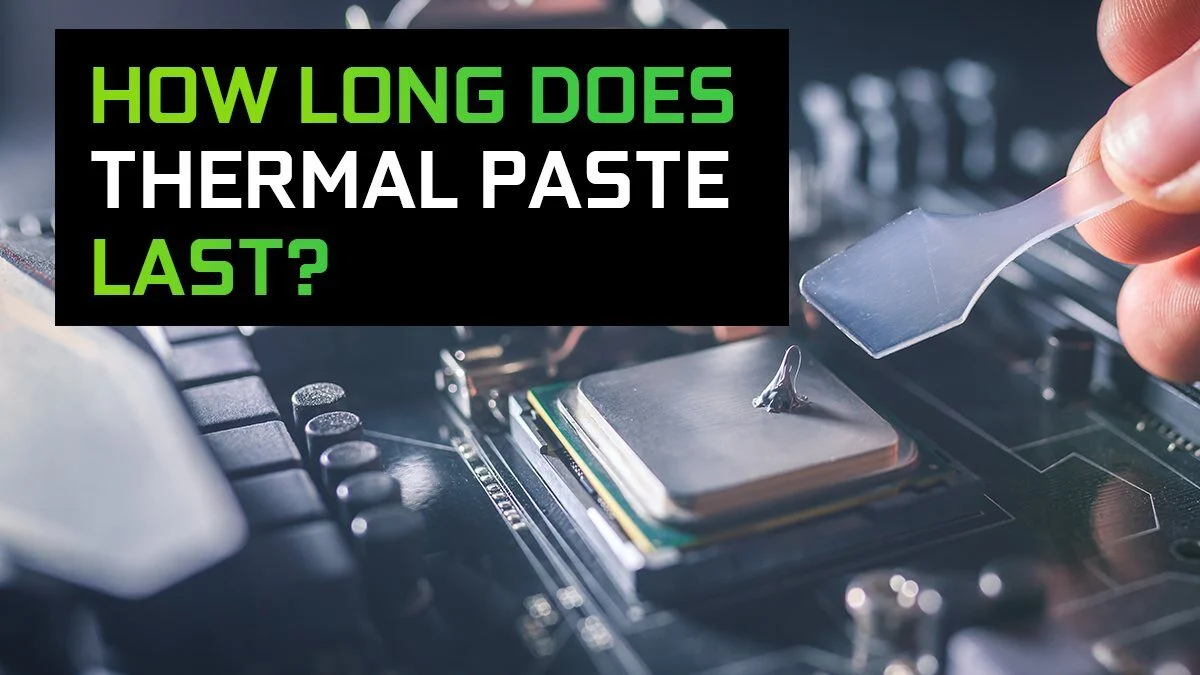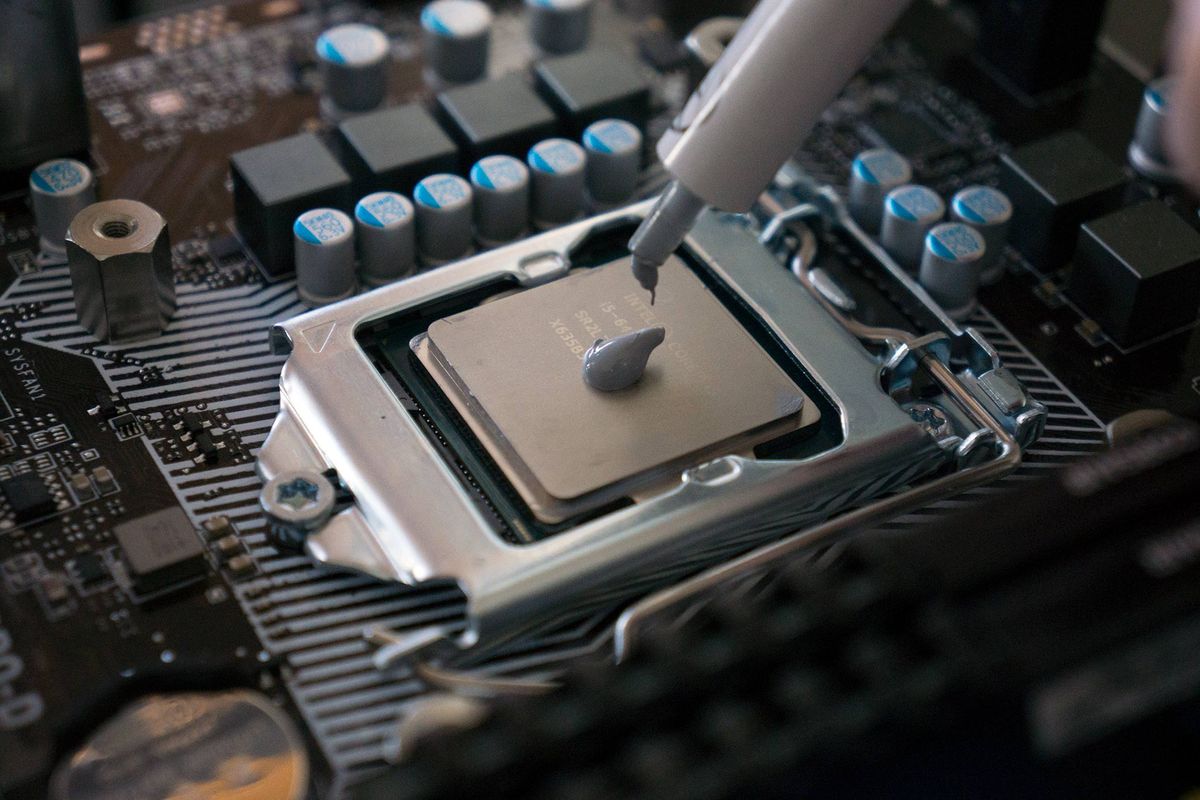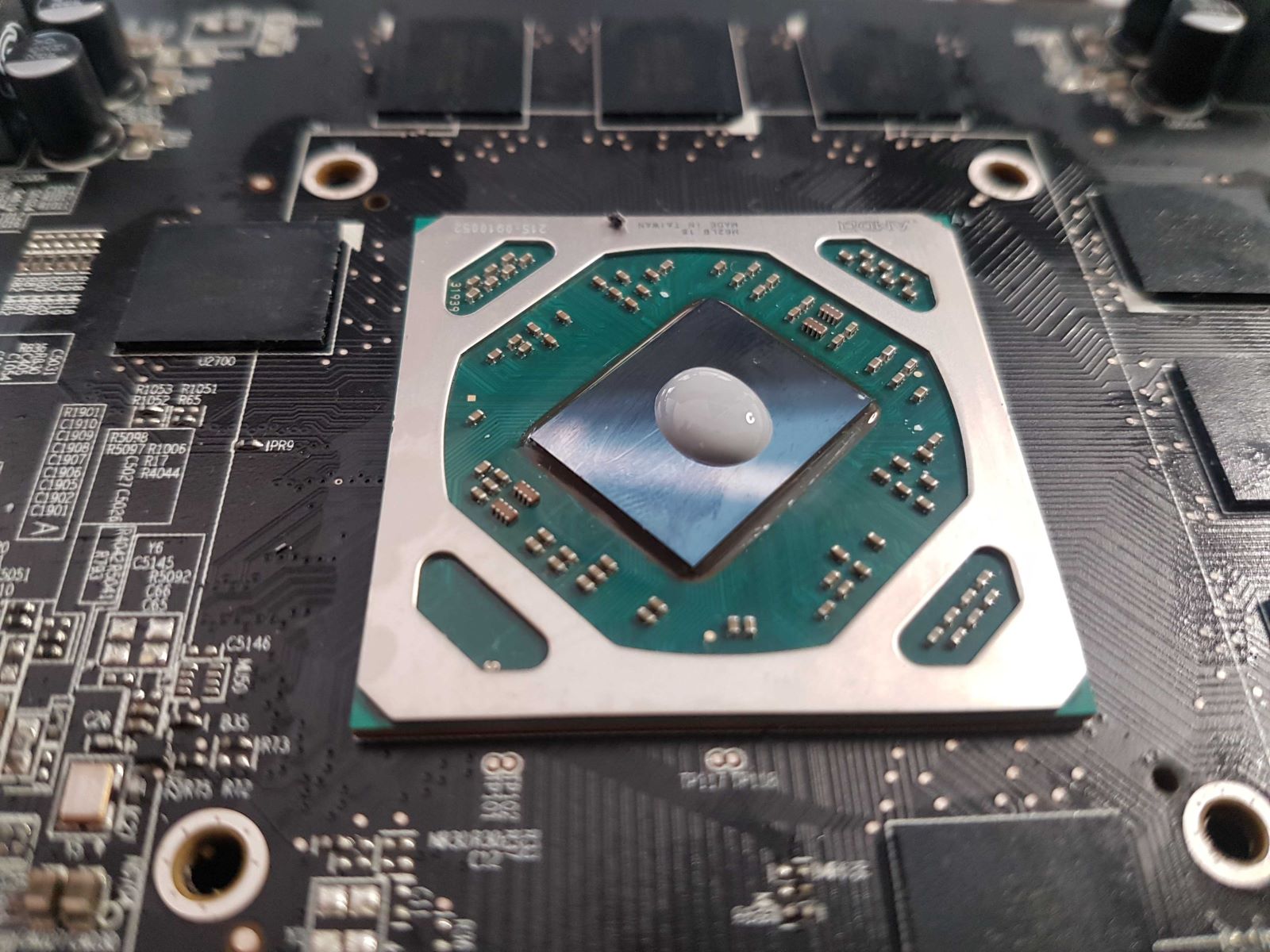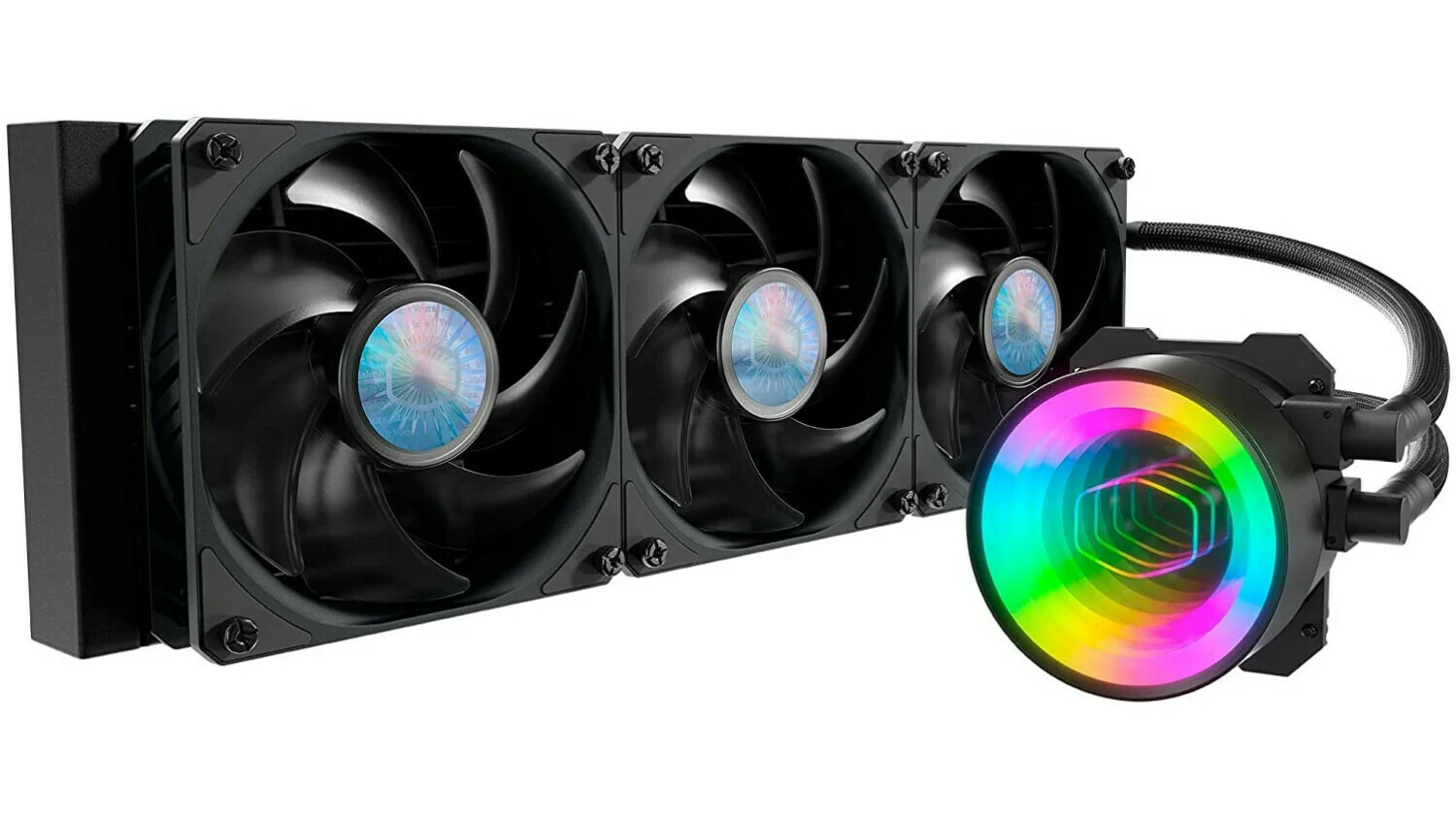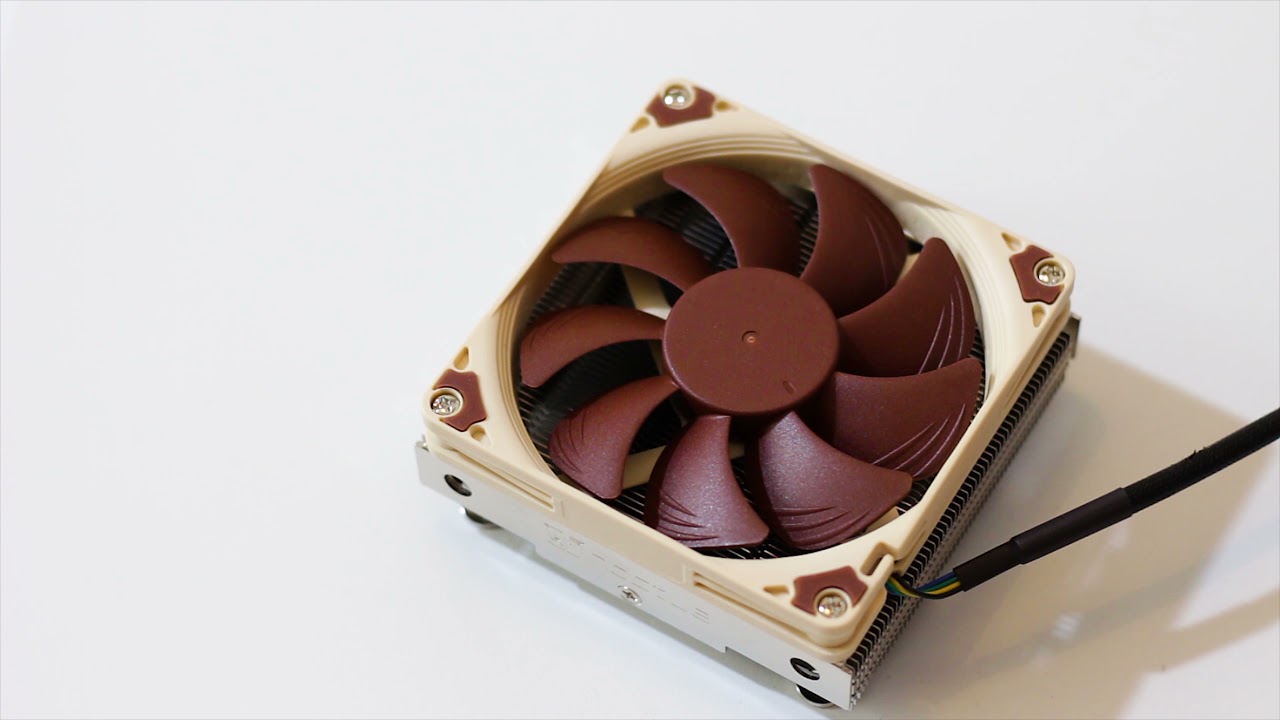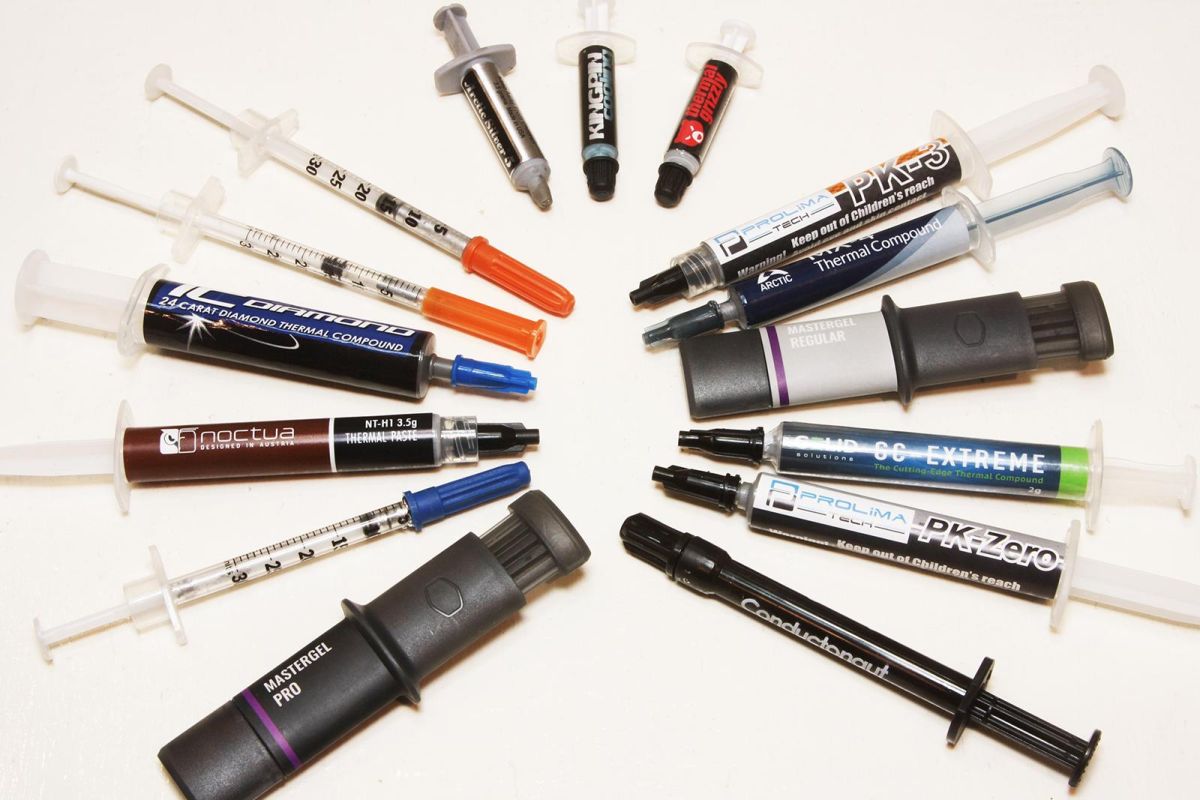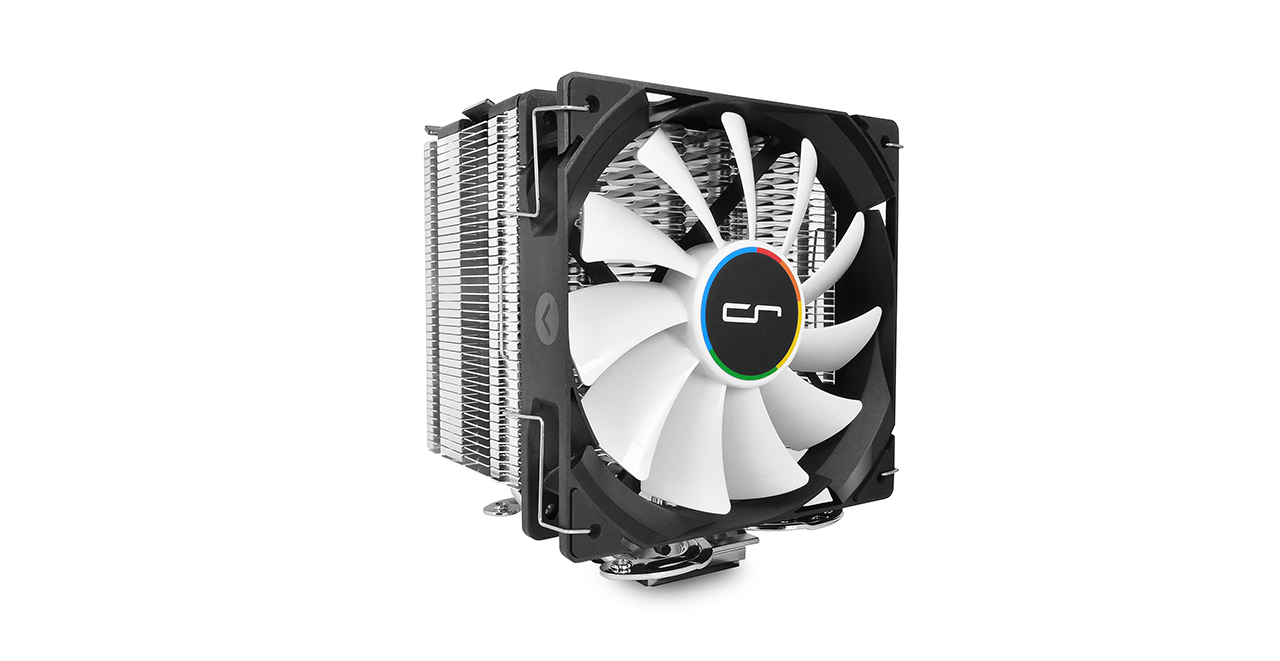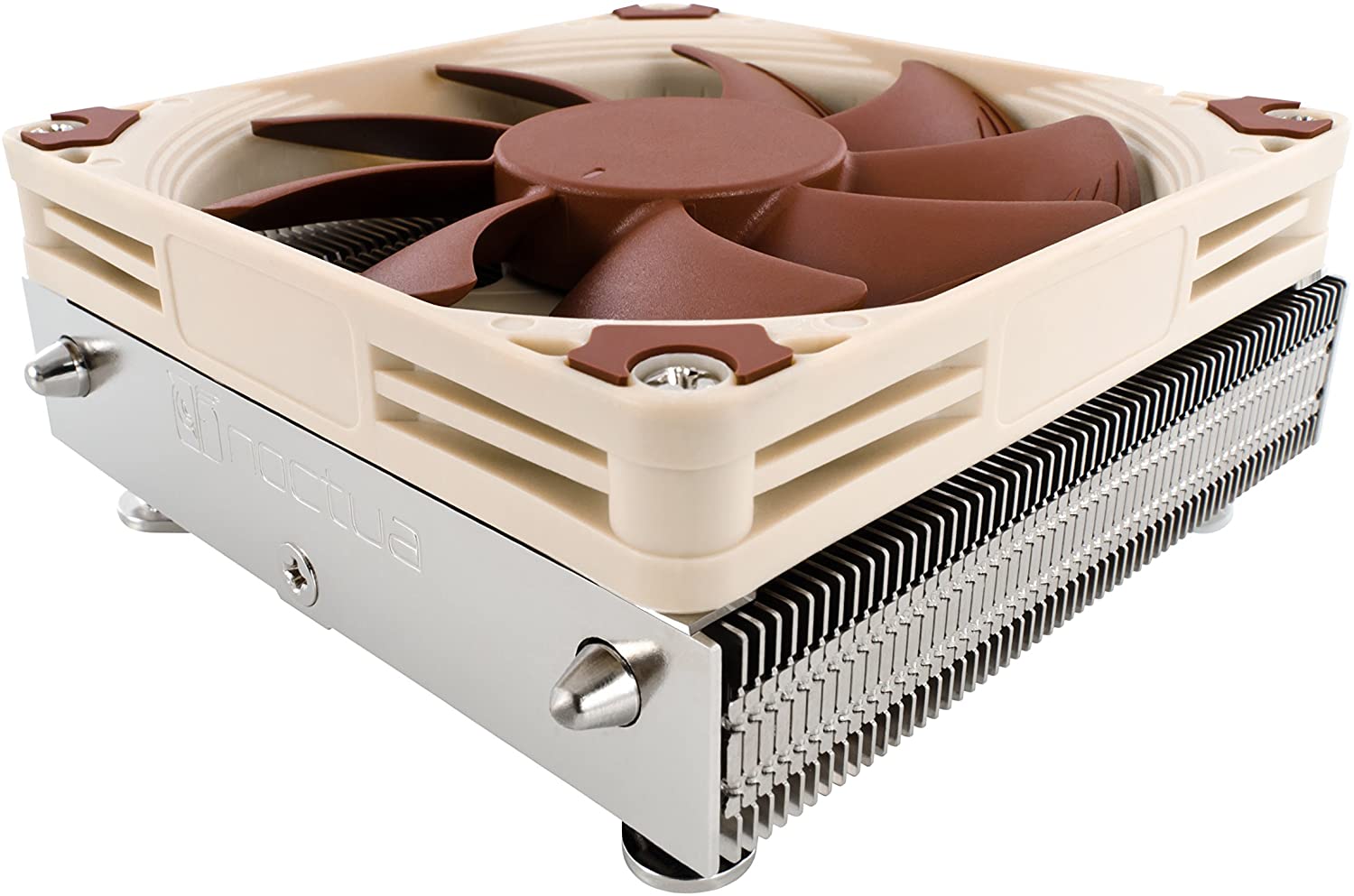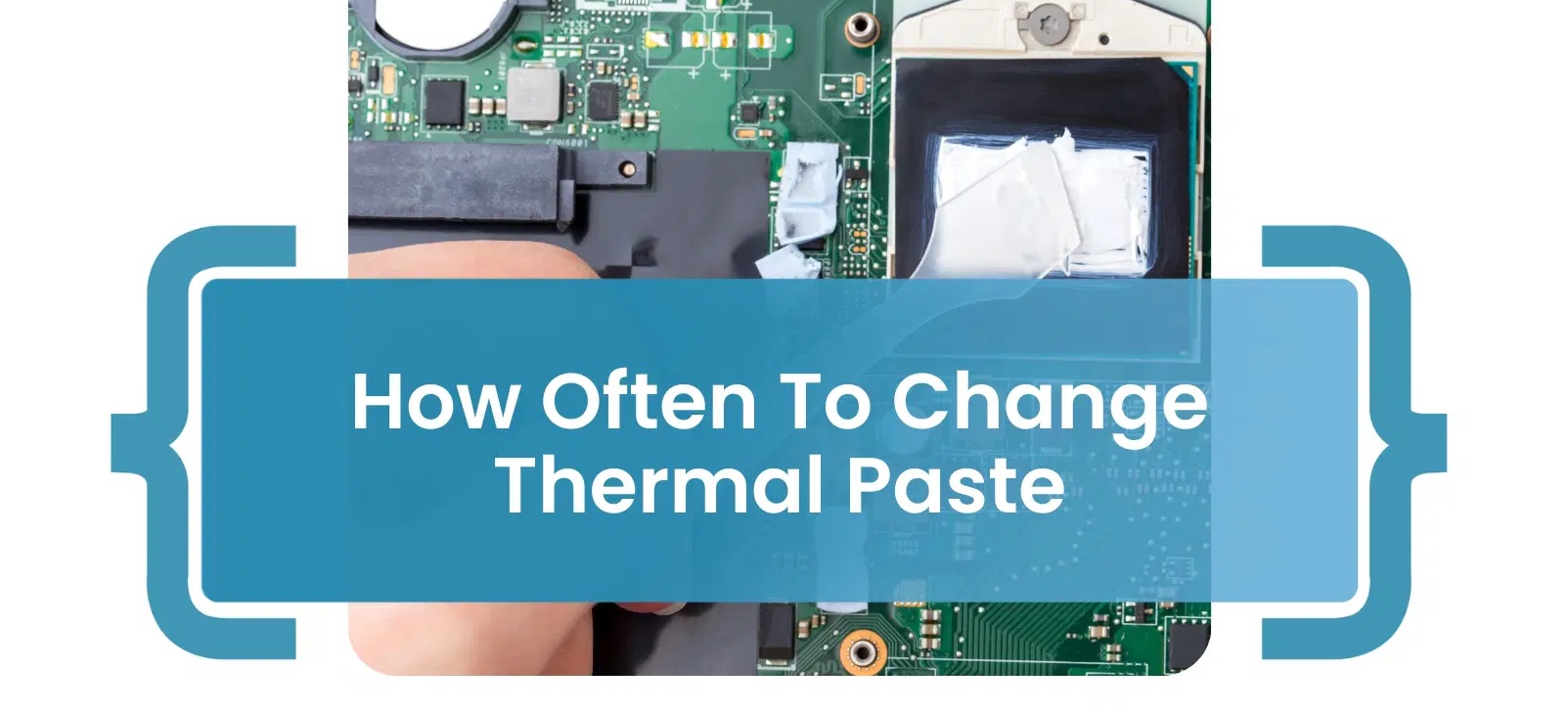Introduction
Welcome to our guide on thermal paste and its longevity on a CPU. If you’re a computer enthusiast or someone who regularly works with CPUs, you may have heard about the importance of thermal paste for optimal cooling performance. But have you ever wondered how long thermal paste actually lasts before it needs to be replaced?
Thermal paste, also known as thermal compound or thermal grease, is a crucial component in the thermal management of a CPU. It acts as a bridge between the CPU and the heat sink, helping to maximize heat transfer and maintain lower temperatures during operation.
In this article, we will delve into the intricacies of thermal paste and its lifespan on a CPU. We will explore its composition, working principle, and the factors that contribute to its degradation over time. Additionally, we will provide insights into the signs of deteriorating thermal paste and the consequences of using it beyond its recommended lifespan. Finally, we will discuss the steps involved in replacing thermal paste to ensure optimal cooling efficiency for your CPU.
Whether you’re a gaming enthusiast, a professional overclocker, or simply a computer user concerned about the performance and lifespan of your CPU, understanding the lifespan of thermal paste is crucial. So, let’s dive in and unravel the mysteries of thermal paste longevity on a CPU!
What is thermal paste?
Thermal paste, often referred to as thermal compound or thermal grease, is a viscous substance that is applied between the CPU and the heat sink. Its primary purpose is to improve the thermal transfer between these two components by filling microscopic imperfections and air gaps that may exist on their surfaces.
Thermal paste is composed of a mixture of thermally conductive particles, such as silver, copper, or ceramic, suspended in a polymer matrix. The thermally conductive particles facilitate the transfer of heat from the CPU to the heat sink, while the polymer matrix ensures the paste adheres well and maintains its consistency over time.
The thermal conductivity of the paste is a crucial factor as it determines how efficiently it can transfer heat. The higher the thermal conductivity, the better the heat transfer between the CPU and the heat sink, resulting in lower CPU temperatures under load.
It’s important to note that different types of CPUs and heat sinks have varying requirements when it comes to thermal paste. Some CPUs require a specific type of thermal paste, while others have integrated heat spreaders that may not require paste application at all. It is essential to consult the CPU and heat sink manufacturer’s guidelines to ensure you are using the appropriate thermal paste for your specific setup.
Overall, thermal paste plays a vital role in ensuring the longevity and optimal performance of your CPU by effectively dissipating heat. By filling the imperfections and gaps between the CPU and the heat sink, it helps to eliminate hot spots and prevent thermal throttling, which can lead to reduced performance and even premature CPU failure.
How does thermal paste work?
To understand how thermal paste works, let’s first establish the basic principles of heat transfer. Heat is generated by the CPU during operation, and it needs to be effectively dissipated to prevent overheating. The heat sink, with its large surface area and fins, is responsible for absorbing and dispersing this heat. However, direct contact between the CPU and the heat sink is not always perfect due to microscopic imperfections and air gaps on their surfaces. This is where thermal paste comes into play.
Thermal paste works by filling these imperfections and air gaps between the CPU and the heat sink. When applied, the paste spreads out, creating a thin, uniform layer between the two surfaces. This layer improves the thermal contact by eliminating the air gaps and maximizing the surface area in contact with the heat sink.
The thermally conductive particles within the thermal paste, such as silver or copper, are highly efficient at transferring heat. They bridge the microscopic gaps between the CPU and the heat sink, facilitating the transfer of heat from the CPU to the heat sink. The polymer matrix in the paste helps adhere it to the surfaces and maintain its consistency over time.
As the CPU heats up, the thermal paste conducts the heat from the CPU to the heat sink. The heat sink, with its larger surface area and better airflow, can then dissipate the heat into the surrounding environment more effectively. This process helps to keep the CPU temperatures within safe limits, preventing thermal throttling and potential damage to the CPU.
In addition to improving heat transfer, thermal paste also helps to counteract any unevenness in the CPU or heat sink surface. By filling the imperfections and leveling out the surfaces, it promotes uniform heat distribution and reduces the risk of hot spots on the CPU.
Overall, thermal paste acts as a crucial intermediary between the CPU and the heat sink, optimizing heat transfer and ensuring efficient cooling. By addressing the imperfections and gaps that naturally occur between the two components, thermal paste enhances the overall thermal conductivity and promotes optimal temperature management for the CPU.
Why does thermal paste degrade over time?
Thermal paste, like any other material, is subject to degradation over time. Several factors contribute to the degradation of thermal paste, which can affect its performance in heat transfer.
One of the main reasons for thermal paste degradation is its exposure to high temperatures. During the operation of a CPU, the thermal paste is repeatedly exposed to heat cycles, causing it to undergo thermal stresses. Over time, these repeated temperature changes can lead to the degradation of the thermal compound, causing it to dry out and become less effective in facilitating heat transfer.
Furthermore, thermal paste can also be affected by another phenomenon called “pump out.” Pump out occurs when the thermal paste is subjected to continuous pressure, such as the weight of the heat sink on top of the CPU. This pressure, combined with the heat cycles, can cause the thermal paste to slowly squeeze out from between the CPU and the heat sink, creating gaps and reducing its effectiveness.
Another factor that can contribute to the degradation of thermal paste is its exposure to environmental elements. Over time, factors such as humidity, dust, and pollutants in the air can contaminate the thermal paste, affecting its thermal conductivity. Additionally, oxidation or aging of the thermal compound’s components can also lead to reduced effectiveness.
The choice of thermal paste can also influence its lifespan and degradation rate. There are different types of thermal pastes available, ranging from basic silicone-based compounds to more advanced metal-based ones. The composition of the thermal paste can affect its durability and how it holds up under various conditions.
It’s worth noting that the degradation of thermal paste does not occur overnight. The lifespan of thermal paste can vary depending on factors like the quality of the paste, the CPU’s operating conditions, and the environment in which the CPU is used. Generally, it is recommended to replace thermal paste every two to three years or whenever you notice a significant increase in CPU temperatures.
Understanding the factors that contribute to thermal paste degradation is important in maintaining optimal cooling performance for your CPU. By regularly monitoring your CPU temperatures and replacing the thermal paste when necessary, you can ensure that your CPU remains cool and protected from potential overheating issues.
Factors that affect the lifespan of thermal paste
The lifespan of thermal paste can be influenced by various factors, which determine how long it remains effective in facilitating heat transfer between the CPU and the heat sink. Understanding these factors can help you assess the longevity of your thermal paste and determine when it needs to be replaced.
1. Quality of the thermal paste: The quality of the thermal paste chosen for your CPU can significantly impact its lifespan. Higher-quality thermal pastes that are made with premium materials tend to have better longevity and are more resistant to degradation over time. It is advisable to invest in well-known brands and reputable thermal pastes to ensure optimal performance and durability.
2. Operating temperatures: The temperatures at which your CPU operates can affect the lifespan of the thermal paste. CPUs that consistently run at higher temperatures may accelerate the degradation of the paste, causing it to dry out or break down more quickly. Overclocking or using CPU-intensive applications for prolonged periods can also increase operating temperatures and, subsequently, impact the lifespan of thermal paste.
3. Heat cycles: Thermal paste is subjected to numerous heat cycles as the CPU heats up and cools down during its regular operation. These temperature changes can cause the paste to expand and contract, leading to it drying out or becoming less effective over time. The more frequent and extreme the heat cycles, the faster the degradation of the thermal paste.
4. Pressure: The pressure applied to the thermal paste between the CPU and the heat sink can affect its lifespan. Excessive pressure, especially over an extended period, can cause the paste to squeeze out or thin out, reducing its effectiveness. It is crucial to ensure proper and evenly distributed pressure when installing the heat sink to minimize any potential impact on the thermal paste.
5. Environmental factors: Environmental elements such as humidity, dust, and pollutants can contribute to the degradation of thermal paste. Moisture or high humidity levels can cause the paste to dry out or corrode over time. Dust and other particles that accumulate on the surface of the CPU and heat sink can also impede heat transfer and reduce the effectiveness of the thermal paste.
6. Duration of use: The length of time that thermal paste has been in use can also affect its lifespan. While most thermal pastes are designed to last for several years, it is advisable to replace the paste periodically, typically every two to three years, or whenever you notice a significant rise in CPU temperatures, to ensure optimal performance.
By considering these factors and regularly monitoring your CPU temperatures, you can gauge the condition of your thermal paste and determine when it is necessary to replace it. By maintaining a healthy and efficient thermal interface between the CPU and the heat sink, you can ensure the longevity and optimal performance of your CPU.
How long does thermal paste last on a CPU?
The lifespan of thermal paste can vary depending on several factors, such as the quality of the paste, operating temperatures, heat cycles, pressure, environmental factors, and duration of use. While there is no fixed timeframe for the longevity of thermal paste, it is generally recommended to replace it every two to three years or whenever you notice a significant increase in CPU temperatures.
Over time, thermal paste can dry out, lose its viscosity, and become less effective in facilitating heat transfer. It may undergo thermal stresses, such as exposure to high temperatures and repeated heat cycles, which can lead to its degradation. This degradation can result in reduced thermal conductivity, increased CPU temperatures, and decreased cooling performance.
It’s important to note that the lifespan of thermal paste can be influenced by the quality of the paste and the conditions under which the CPU operates. High-quality thermal pastes, made with premium materials, tend to have better longevity and resistance to degradation. CPUs that consistently run at higher temperatures or are subjected to heavy usage may experience faster paste degradation.
Regularly monitoring CPU temperatures is an effective way to gauge the condition of thermal paste. If you notice a significant rise in temperatures or encountered thermal throttling issues, it may be an indication that the thermal paste needs to be replaced. It’s worth noting that replacing the thermal paste is a relatively simple task and can greatly improve the cooling performance of your CPU.
Additionally, it’s important to consider the manufacturer’s recommendations for your specific CPU and heat sink. Some CPUs or heat sinks may require more frequent thermal paste replacement, while others may have integrated heat spreaders that do not require paste application.
In summary, the lifespan of thermal paste on a CPU can vary depending on various factors. Regularly monitoring CPU temperatures and considering the quality of the paste, operating conditions, and duration of use can help determine when to replace the thermal paste. By maintaining a healthy thermal interface between the CPU and the heat sink, you can ensure optimal cooling performance and extend the lifespan of your CPU.
Signs of degraded thermal paste
Over time, thermal paste can degrade and lose its effectiveness in facilitating heat transfer between the CPU and the heat sink. It’s important to be aware of the signs of degraded thermal paste so that you can identify when it needs to be replaced. Here are some common signs to look out for:
1. Increase in CPU temperatures: One of the most noticeable signs of degraded thermal paste is a significant increase in CPU temperatures. If you notice that your CPU is running hotter than usual, even under normal operating conditions, it could be an indication that the thermal paste is no longer effectively transferring heat.
2. Thermal throttling: If your CPU is experiencing thermal throttling, where it intentionally reduces its clock speed to prevent overheating, it could be due to degraded thermal paste. Thermal throttling is a protective mechanism that kicks in when the CPU reaches unsafe temperature levels.
3. Unstable system or crashes: Deteriorated thermal paste can lead to instability in your system. You may experience more frequent crashes, freezes, or unexpected shutdowns, especially when the CPU is under heavy load.
4. Increased fan noise: When the thermal paste is no longer effectively transferring heat, the CPU may heat up more, causing the cooling fans to work harder and spin at higher speeds. This increased fan noise can be a sign that the thermal paste needs to be replaced.
5. Uneven application: If you’ve recently applied thermal paste or had it applied by someone else, and you notice that the layer is uneven or not properly covering the CPU surface, it could lead to reduced thermal conductivity. This uneven application could be an indication that the thermal paste needs to be reapplied.
It’s important to note that these signs may not always be caused by degraded thermal paste alone. Other factors, such as inadequate cooling solutions, dust accumulation, or faulty hardware, can also contribute to similar symptoms. Therefore, it’s essential to rule out other potential issues before concluding that the thermal paste is the primary cause.
Regularly monitoring CPU temperatures and examining the condition of the thermal paste can help you identify any signs of degradation. If you notice any of the above indicators, it’s recommended to replace the thermal paste to ensure optimal cooling performance and prevent potential damage to your CPU.
Consequences of using degraded thermal paste
Using degraded thermal paste can have several negative consequences on the performance and lifespan of your CPU. When thermal paste loses its effectiveness in facilitating heat transfer between the CPU and the heat sink, it can lead to various issues, including:
1. Increased CPU temperatures: Degraded thermal paste hinders the efficient transfer of heat away from the CPU. As a result, CPU temperatures can rise, potentially reaching unsafe levels. Increased temperatures can adversely affect the performance and stability of the CPU, leading to reduced processing speeds and potential hardware failures.
2. Thermal throttling: When the CPU temperatures reach a critical threshold due to insufficient heat dissipation caused by degraded thermal paste, the CPU may engage in thermal throttling. Thermal throttling is a protective measure implemented by the CPU to reduce its clock speed and performance in order to prevent overheating. This leads to decreased overall system performance.
3. Reduced overclocking potential: Overclocking involves running the CPU at higher frequencies to extract more performance. When using degraded thermal paste, the increased heat generated by overclocking can exacerbate temperature issues. The inadequate heat transfer may limit your ability to achieve stable and higher overclocks, diminishing the benefits of overclocking.
4. Shortened CPU lifespan: Prolonged exposure to high temperatures due to degraded thermal paste can significantly reduce the lifespan of your CPU. Overheating can cause accelerated wear and tear on the CPU components, potentially leading to permanent damage. It’s important to maintain appropriate temperatures to ensure the longevity of your CPU.
5. System instability: Inadequate heat dissipation caused by degraded thermal paste can result in system instability. Unstable system behavior, including crashes, freezes, and unexpected shutdowns, can occur when the CPU exceeds its safe operating temperatures. These issues can impact the overall user experience and potentially lead to data loss or corruption.
6. Increased fan noise: As temperatures rise due to ineffective thermal paste, the cooling fans in your system will need to work harder to compensate for the reduced heat dissipation. This increased fan activity can result in louder fan noise, which can be distracting and disrupt the overall peace and quiet of your computing environment.
To mitigate these consequences, it is vital to regularly monitor CPU temperatures and replace degraded thermal paste in a timely manner. By ensuring efficient heat transfer, you can maintain optimal CPU performance, prevent overheating-related issues, and prolong the lifespan of your CPU.
How to replace thermal paste
Replacing thermal paste is a relatively simple process that can greatly improve the cooling performance of your CPU. Here is a step-by-step guide on how to replace thermal paste:
1. Gather the necessary tools: You will need isopropyl alcohol, lint-free cloths, thermal paste, a screwdriver (if required to remove the heat sink), and thermal paste applicator (optional).
2. Prepare the workspace: Ensure you are working in a clean and well-ventilated area. Static electricity can damage computer components, so it’s a good idea to ground yourself by touching a grounded metal object before handling any internal components.
3. Power down and disconnect: Shut down your computer and unplug it from the power source. This prevents any accidental electrical damage during the process.
4. Remove the heat sink: If necessary, remove the heat sink from the CPU by carefully unscrewing any screws or latches holding it in place. Refer to the manufacturer’s guidelines for specific instructions on removing the heat sink for your CPU model.
5. Clean the CPU and heat sink surface: Use a cotton swab or lint-free cloth dampened with isopropyl alcohol to carefully clean the old thermal paste from both the CPU surface and the heat sink. Ensure that the surfaces are completely clean, removing any residue or debris.
6. Apply new thermal paste: Apply a small, pea-sized amount of thermal paste to the center of the CPU surface. Use an applicator or carefully spread the paste evenly across the surface, ensuring it covers the entire CPU area but not excessively.
7. Reapply the heat sink: Carefully place the heat sink back onto the CPU, ensuring that it is properly aligned with the screw holes. Gently press down to evenly distribute the thermal paste and provide a secure connection.
8. Tighten screws: If you had to remove any screws to detach the heat sink, tighten them back in a diagonal pattern to ensure even pressure distribution. Follow the manufacturer’s guidelines for specific torque or tightening specifications.
9. Reconnect and power up: Once the heat sink is securely attached, reconnect any power cables and turn on your computer. Monitor your CPU temperatures to ensure that the replacement of thermal paste has improved cooling performance.
Remember to consult your CPU and heat sink manufacturer’s guidelines for any specific instructions or precautions before replacing the thermal paste. Following these steps will help ensure that the thermal paste is properly applied, enabling effective heat transfer between the CPU and the heat sink, and promoting optimal cooling performance.
Conclusion
Thermal paste plays a crucial role in maintaining optimal cooling performance for your CPU. By facilitating efficient heat transfer between the CPU and the heat sink, thermal paste helps to keep temperatures within safe limits and prevent potential thermal throttling and damage to the CPU.
Understanding the lifespan of thermal paste and recognizing the signs of degradation is essential for maintaining a healthy thermal interface. Factors such as the quality of the paste, operating temperatures, heat cycles, pressure, environmental factors, and duration of use all contribute to the longevity of thermal paste.
Regularly monitoring CPU temperatures and replacing degraded thermal paste can mitigate the negative consequences of using ineffective thermal paste. Increased CPU temperatures, thermal throttling, reduced overclocking potential, shortened CPU lifespan, system instability, and increased fan noise are some of the consequences that can arise from using degraded thermal paste.
Replacing thermal paste is a relatively simple process that can be done with a few basic tools, such as isopropyl alcohol, lint-free cloths, thermal paste, and a screwdriver (if necessary). Following the proper steps and guidelines can ensure that the thermal paste is applied correctly and optimally.
To maintain the longevity and optimal performance of your CPU, it is important to periodically assess the condition of your thermal paste and replace it as needed. By doing so, you can ensure efficient heat transfer, prevent overheating-related problems, and extend the lifespan of your CPU.
We hope this guide has provided you with comprehensive insights into thermal paste and its lifespan on a CPU. Remember to consult the manufacturer’s guidelines for your specific CPU and heat sink when replacing thermal paste, as they may have specific recommendations and requirements.
By staying proactive in maintaining your thermal interface and being mindful of the signs of degraded thermal paste, you can ensure the optimal performance, longevity, and reliability of your CPU for years to come.







